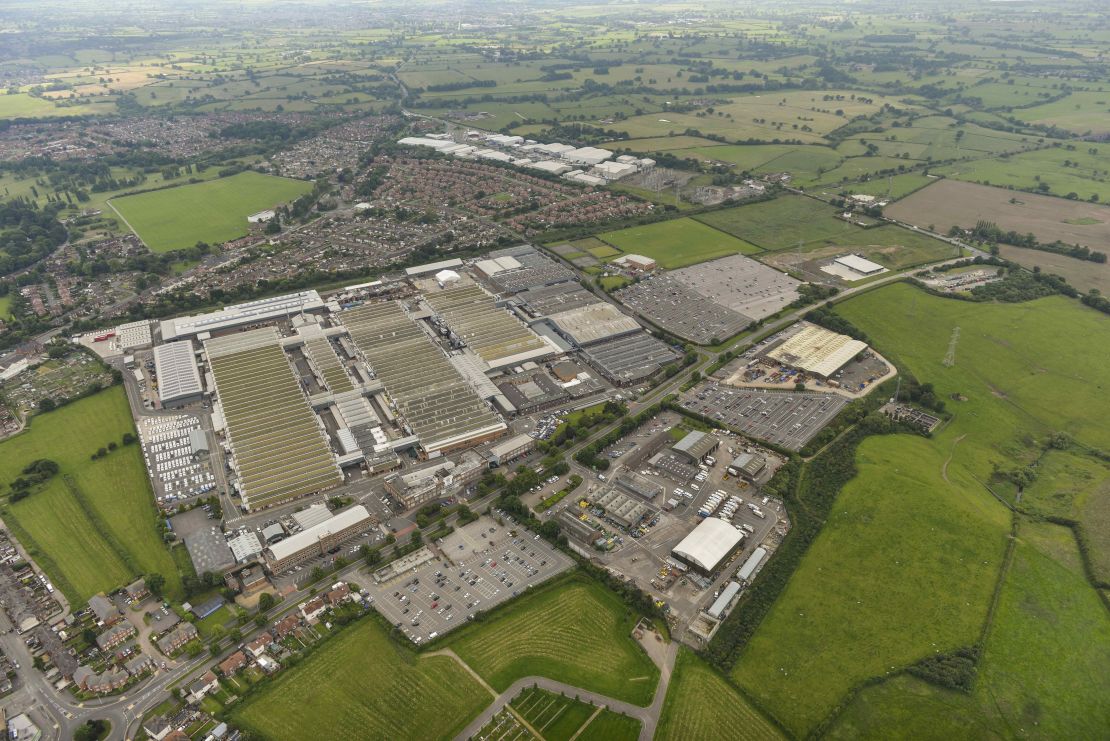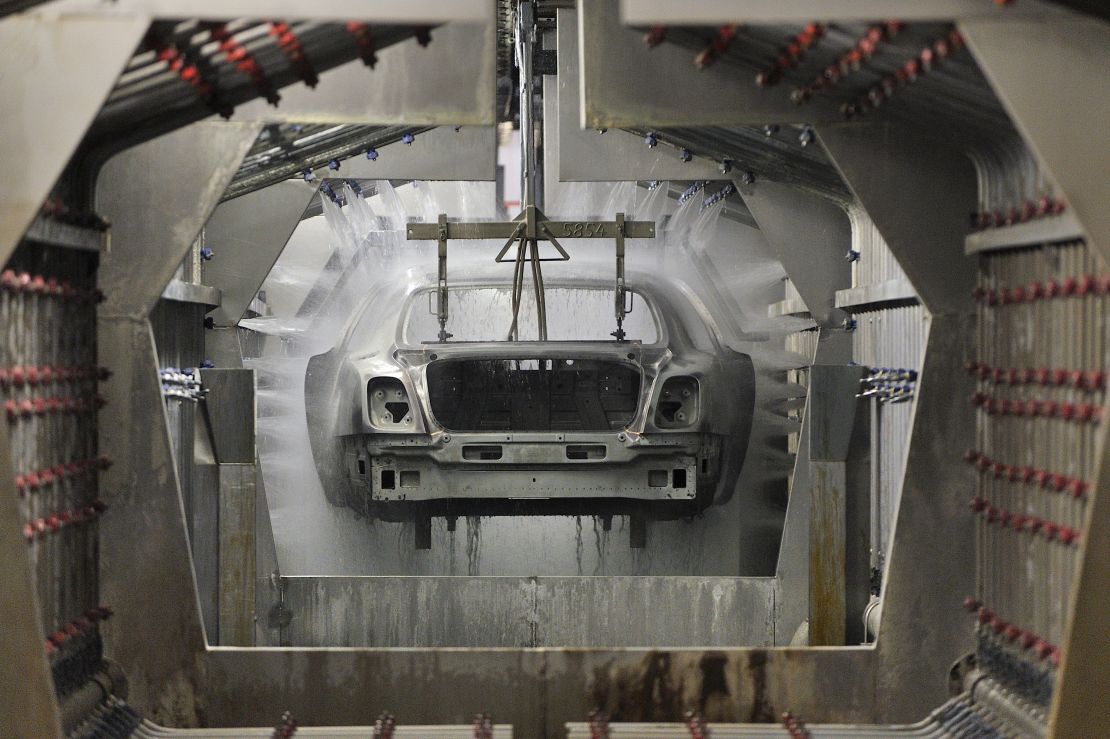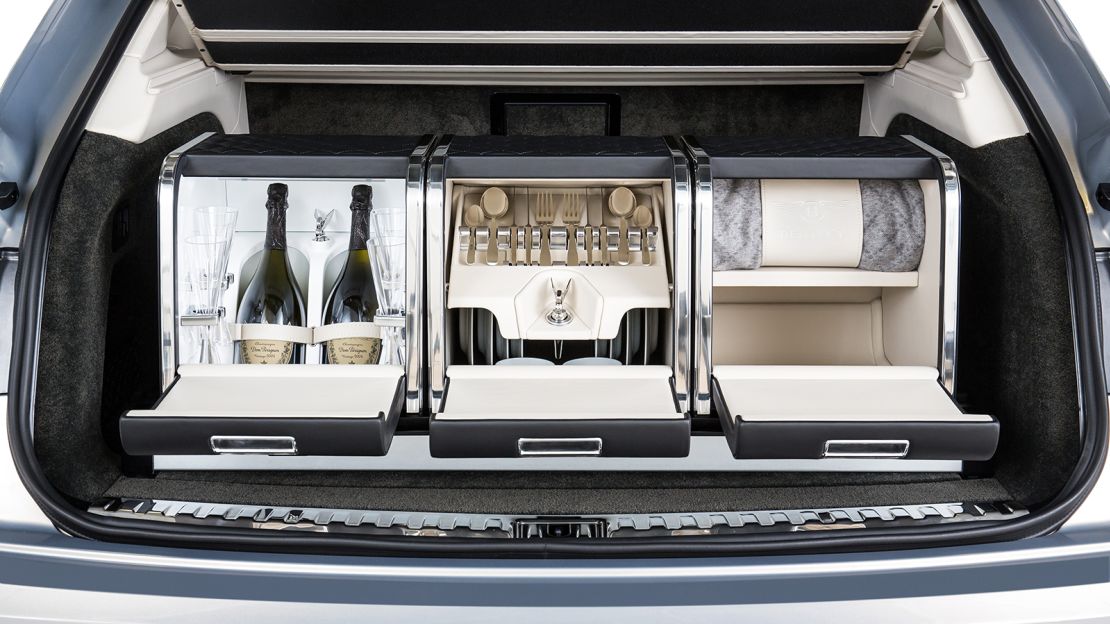Editor’s Note: John McIlroy is Deputy Editor of Auto Express and Carbuyer.
Story highlights
Luxury car brand Bentley has turned its fortunes around with new models and bespoke details
Investment in new technology has also helped revive the car's signature hand-crafted techniques
There was a time when British luxury car manufacturer Bentley produced just a few hundred vehicles a year and hoped that would be enough to keep it alive.
Had it not been for Bentley’s reputation – garnered through success at the famous Le Mans 24 Hours sports car race – it could have disappeared altogether.
But no more – now Bentley is buzzing. Its factory in Crewe is bursting at the seams, and being reconfigured to allow the firm additional capacity.
And although the company never admits sales targets, it seems inevitable that in the next two years it will break its own annual production record by delivering as many as 12,000 cars.
Revolutionary investment
Bentley Bentayga vs. Holland & Holland Range Rover
The Bentley revolution started in 1998 when its owner, military firm Vickers, offloaded it to the enormous Volkswagen Group (VW).
Bentley would deliver just over 400 cars that year, and the German management at VW could have allowed the brand to wither.
Instead it invested heavily, and continues to do so. The firm is sinking almost one billion dollars into Bentley’s factory as the British brand – founded by W.O. Bentley in North London in 1919 – heads towards its centenary celebrations.
Generating the success to support this expansion has taken careful nurturing from VW, and it has nudged Bentley into the 21st century while retaining the craftsmanship and bespoke service that have kept it alive for almost a hundred years.
Its first focus has been production, and the site at Crewe in the UK has changed dramatically over the past decade.

Buildings which once made Merlin engines for famous World War Two planes like the Lancaster, Hurricane and Spitfire in the 1940s have now been cleaned, painted and equipped with the largest roof-based solar panel set-up in the UK.
The entire site is now being used and new buildings include a bodyshell preparation facility and a research and development center – something unthinkable in the 1980s.
Model of acceleration
From an automotive perspective, the vehicle responsible for driving the current sales charge is the Bentayga, a luxury SUV that split opinion when it was first introduced.
Now Bentley’s best-selling vehicle, the Bentayga – which is based on the much cheaper Audi Q7 (and all the more profitable for it) – has over a two year waiting list in some markets.

The vehicle is only a success because Bentley has disguised its origins with the sort of sumptuous quality that made it famous in the first place.
In perhaps its cleverest move of all, VW has been careful to retain two of the firm’s key areas of expertise – leather and wood.
In the leather shop, huge hides from cattle reared in enclosures without any barbed wire (to reduce the risk of imperfections) are inspected by trained specialists.
Any areas of the leather that don’t pass the test are marked, then a state-of-the-art cutting device uses these squiggles to calculate the most efficient way of cutting out the material required.

It’s a curious sight, these vastly experienced craftsmen and women working seamlessly with clinical technology.
But it’s a classic example of enhancement through modernization – productivity and efficiency have been improved, without impacting on quality.
The same goes for the wood shop. Once a shed filled with choking dust, the facility is now more like a science lab.
It barely smells of wood at all, in fact, a tribute to the sort of ventilation system that could probably serve as an aircraft wind tunnel. But at its heart are second- or third-generation employees, training up apprentices in skills going back a century or more.
Royal ‘special forces’
They’re needed, too, because it takes a skilled workforce like this to deliver the sort of bespoke experience so many Bentley owners crave.
What sets this car apart from their other seven could be the fact that its paint color matches that of their client’s regular nail varnish – rumor has it that the client who requested this painted the Bentley rep’s nails instead of handing over a bottle as a sample.

Or that the leather upholstery is the same hue as their favorite sofa.
And how many other manufacturers allow you to choose from over a dozen fine veneer types and inspect the actual 0.6mm-thick slices that are going to be installed in your vehicle?
In cases when Bentley alone cannot live up to customer demands, an even more bespoke division called Mulliner is on hand to deliver anything from monogrammed seats and dashboards to entirely different bodywork.
The ‘special forces’ of Bentley’s craftspeople, Mulliner was called upon to build Her Majesty the Queen’s State Limousines back in 2002.

Increasingly, bringing this level of service to the right customers also requires a different retail experience from a conventional car showroom.
Bentley boutique stores are springing up around the world, showcasing the fact that leather and paint can be ordered in any color and highlighting additional brand extensions that include everything from plush luggage sets to luxury fragrance.
Challenges remain. Bentley has not been immune to the economic turmoils in Russia and China, despite enjoying a luxury vehicle market share approaching 25 percent.
But with Bentayga fueling the coffers and an all-new generation of Continental cars due within the next 18 months, it is probable that by the time it celebrates its centenary in 2019, this old British brand will never have enjoyed such a promising future.



























